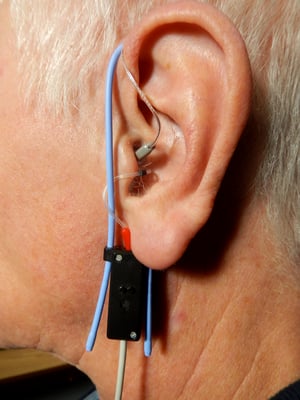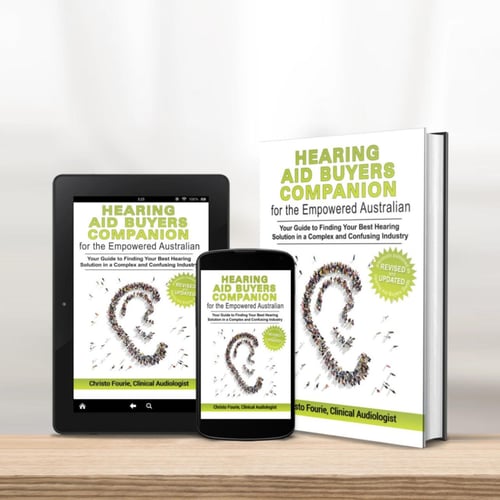Time To Read: 5 minutes
 If you need hearing aids and it is your first time wearing them, you might find newly reintroduced sound to be loud, distracting, and in some cases very distressing.
If you need hearing aids and it is your first time wearing them, you might find newly reintroduced sound to be loud, distracting, and in some cases very distressing.
Wearing hearing aids takes a little while to get used to (we have an article on this here), and there is plenty your clinician can do to help you through the process. But it all starts with getting the initial fitting as close to perfect as possible.
And one of the Gold Standard tools in the audiologist’s kit is called Real Ear Measurement
Real ear measurement (REM) measures the sound pressure level that develops when a hearing aid is worn in the ear and verifies that the hearing aid is providing the right amount of amplification for your particular hearing loss prescription.
Each ear canal differs in shape, size, and acoustic resonance. So the same hearing aid, with the same settings can deliver quite a varied performance simply based on these individual ear canal differences.
Real ear measures help the skilled audiologist compensate for these individual differences accurately.
A slim silicone probe, connected to an external microphone, is inserted into the ear canal along with the hearing aid.
The REM system emits a test stimulus from a loudspeaker situated about 30cm to 1m away and measures the output in the ear canal to determine how much amplification the hearing aid is providing at the ear drum compared to the prescription for your hearing loss.
This means you and your clinician have independent verification that the settings are correct and that just the right amount of sound is being delivered to your eardrums. Any discrepancy between the hearing aid programming and the sound reaching your eardrums can be identified and corrected by the audiologists in real time using their specialised fitting software in real time.
Despite the fact that Real Ear Measurements is acknowledged as industry best practice, it seems not every clinic performs this important test.
In fact, according to an industry study, only 34% of clinics reported using the REM equipment regularly even though it was available in 57% of clinics.
From the report:
“These data conclude that 81 hearing aid fittings, out of a possible 100, likely do not provide optimal audibility and sound quality to the hearing aid user. Similar findings have been reported by Mueller in 2005 and Mueller and Picou in 2010. This lack of service delivery, we believe, lends to the inappropriateness of the hearing aid fitting, especially related to audibility, and is a leading cause of stigma—a primary catalyst for the low adoption rates in our industry.”
There are a number of reasons why many clinics do not do this as standard but one of the most commonly cited reasons is lack of time. This is why Value Hearing hearing's initial fitting appointments last around 1 hour.
So, why do real ear measures matter?
Research shows that people who have their hearing aids fitted using real ear measurements have greater success in wearing hearing aids in the long term. A survey of hearing aid wearers who were not fitted using Real Ear Measurement showed a sharp decline (18%) in satisfaction a year after fitting. And that was significantly different from the satisfaction ratings of the people fitted with REMs:
“Performing this verification during the initial fitting process helps ensure that the user is receiving a “just right” level of amplification- not too much where everything is too loud, and not too little where the user has significant trouble hearing speech even with the hearing aids on.”
In fact, one of our own audiologists says that an older hearing aid fitted with Real Ear Measurement may work for you better than a high-tech, brand-new one fitted without Real Ear Measurement.
Your hearing is too important to your health and well-being to compromise on. Hearing aids are only an invaluable investment when you wear them to maximise your best possible hearing.
Before you make your next appointment, be sure to ask the clinic whether Real Ear Measurement is employed and if needed, remind the clinician again when you go in for a hearing aid fitting.
Do you enjoy empowering yourself?
The Hearing Aid Buyers Companion is for you. It is full of helpful information to help educate you on hearing, hearing aids, and the industry. By reading the Companion, you will be better able to navigate your journey to your best possible hearing like an expert. The Companion sells as a physical book for up to $40 in bookstores.
You can get the complete edition for FREE as a PDF download. Simply complete the form below the image to receive your copy instantly.
